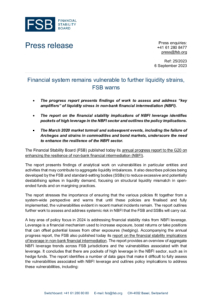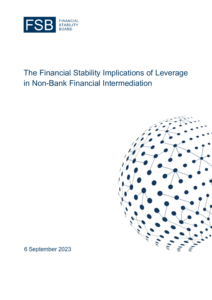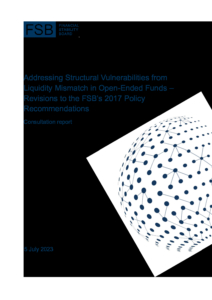The main focus of the FSB policy work to enhance NBFI resilience is to reduce excessive spikes in the demand for liquidity by addressing the vulnerabilities that drive those spikes or by mitigating their financial stability impact. Certain activities and types of entities (so-called ‘key amplifiers’) may particularly contribute to aggregate liquidity imbalances and the transmission and amplification of shocks due to their size, structural characteristics and behaviour in stress.
This year’s progress report presents the findings of analytical work on key amplifiers of liquidity stress, especially those associated with non-bank leverage. It also sets forth policy proposals being developed by the FSB and standard-setting bodies (SSBs) to reduce excessive spikes in liquidity demand related to:
-
structural liquidity mismatch in open-ended funds (OEFs)
-
margining practices
Recent market incidents have confirmed that many of the key amplifiers worked in tandem to transmit shocks across the financial system. Given this, it is critical to ensure that the various policies fit together from a system-wide perspective. Experience with the use of tools for systemic risk mitigation in NBFI is limited to date. The report outlines further work to assess and address systemic risk in NBFI that the FSB, in collaboration with SSBs, will carry out in 2024 and beyond.


